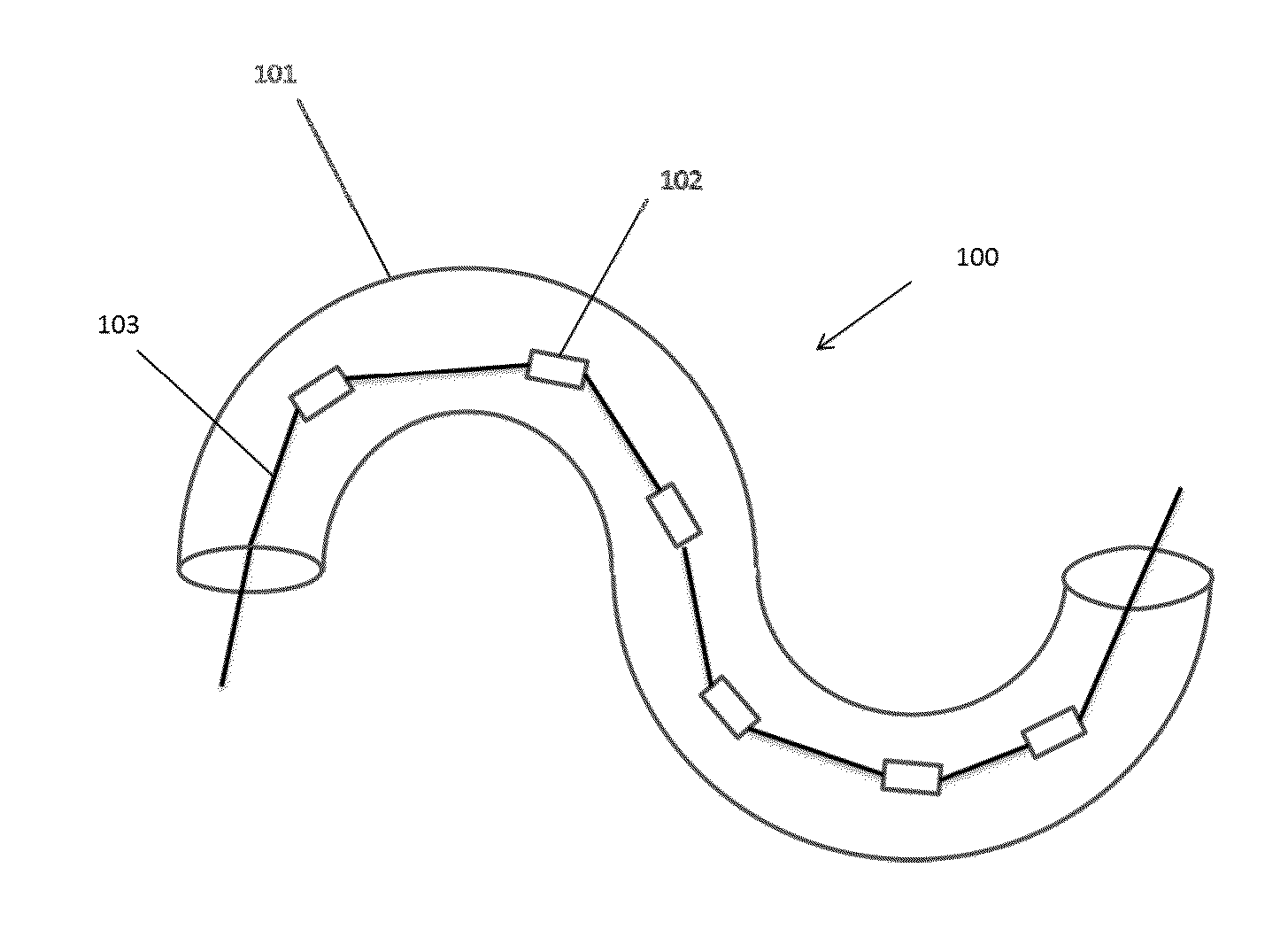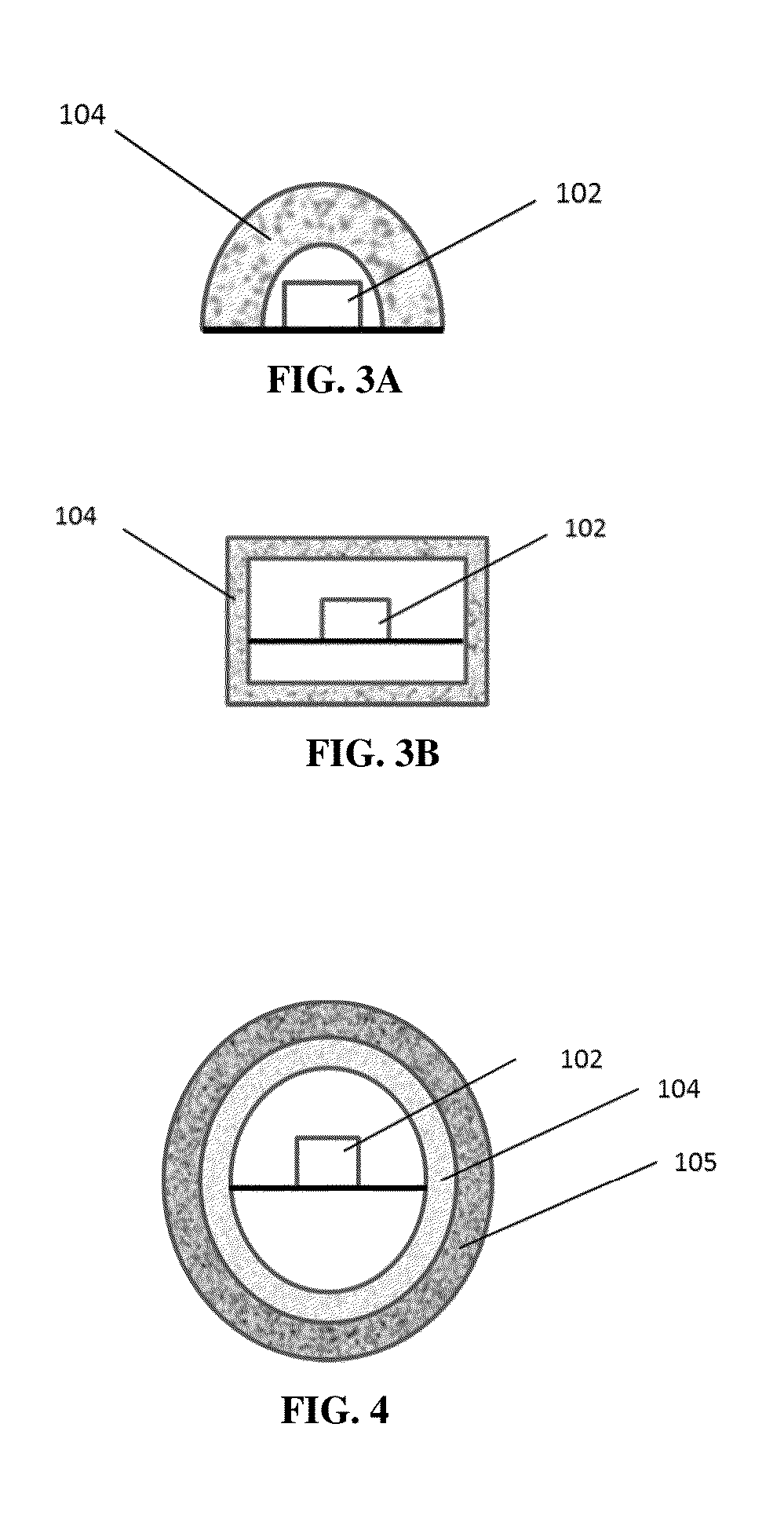Light-emitting element
- Summary
- Abstract
- Description
- Claims
- Application Information
AI Technical Summary
Benefits of technology
Problems solved by technology
Method used
Image
Examples
examples
[0058]The following components were used in the inventive and comparative examples:
[0059]Component A1: Dimethylvinylsiloxy group terminated a copolymer of methylvinylsiloxane and dimethylsiloxane (content of MeViSiO unit=0.25 mol. %);
[0060]Component A2: Trimethylsiloxy group terminated a copolymer of methylvinylsiloxane and dimethylsiloxane (content of MeViSiO unit=0.20 mol. %);
[0061]Component A3: Trimethylsiloxy group terminated a copolymer of methylvinylsiloxane and dimethylsiloxane (content of MeViSiO unit=0.15 mol. %);
[0062]Component A4: Trimethylsiloxy group terminated a copolymer of methylhydridesiloxane and dimethylsiloxane (content of MeHSiO unit=0.23 mol. %);
[0063]Component B1: Spherical alumina oxide powder with BET specific surface of 0.5 m2 / g and with average particle size of 10 μm;
[0064]Component B2: Spherical alumina nitride powder with BET specific surface of 0.5 m2 / g and with average particle size of 5 μm;
[0065]Constituent B3: Spherical silicon carbide powder with BE...
example i-1
Inventive Example I-1
5 wt. % Al2O3
[0075]Constituent C1 (0.2 g), 0.02 g of Constituent of C2 and 0.1 g of Constituent B1 were dispersed in 0.85 g of Constituent A1 and 0.85 g of Constituent A4 to afford a mixture. D1 (0.015 g) was then dispersed in the mixture. A portion of the mixture (1.5 g) was ejection molded into the shape of a disc and cured at a temperature 150° C. for 10 min. This afforded a 2 mm thick disc.
##ventive example c-3
Inventive Example C-3
20 wt. % AlN
[0077]Constituent C1 (0.2 g), 0.02 g of Constituent C2 and 0.4 g of Constituent B2 were dispersed in 0.7 g of Constituent A1 and 0.7 g of Constituent A4 to form a mixture. D1 (0.015 g) was then dispersed in the mixture. A portion of the mixture (1.5 g) was ejection molded into the shape of a disc and cured at a temperature 150° C. for 10 min. This afforded a 2mm thick disc.
PUM
 Login to View More
Login to View More Abstract
Description
Claims
Application Information
 Login to View More
Login to View More - R&D
- Intellectual Property
- Life Sciences
- Materials
- Tech Scout
- Unparalleled Data Quality
- Higher Quality Content
- 60% Fewer Hallucinations
Browse by: Latest US Patents, China's latest patents, Technical Efficacy Thesaurus, Application Domain, Technology Topic, Popular Technical Reports.
© 2025 PatSnap. All rights reserved.Legal|Privacy policy|Modern Slavery Act Transparency Statement|Sitemap|About US| Contact US: help@patsnap.com



